You may wonder what exercise bike should you get and what’s better, a recumbent exercise bike or an upright bike. Or maybe a treadmill or an elliptical cross trainer is actually a better choice for your goal.
We compared the recumbent exercise bike head to head with upright bikes, elliptical cross trainers, treadmills, pedal exercisers and even semi-recumbent bikes.
All the exercise bikes and other equipment we covered here are ideal for home use and home gyms.
If you have a small space, check out which compact machines are best for cramped spaces.
We’ll take a look at which machine is best for weight loss, is it the recumbent bike or the upright bike? Or maybe the newer types of semi-recumbent bikes. We stack the machines by how many calories each of them burns.
But weight loss isn’t everything, you also want a machine that is good for your knees. So we rate which has the lowest impact on your hips, knees and other joints.
There’s no one size fits all, see what fits your goal.
We reveal some important features you may not be aware of but are critical to making the right choice. If you want to be sure you’re making the best decision, read on…
Let’s begin
You can read chronologically or jump to a specific section
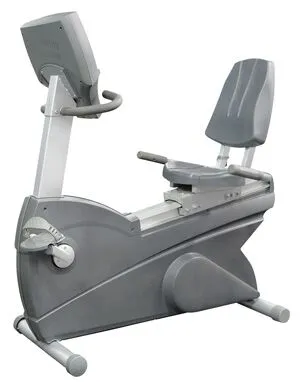
Want to buy a recumbent bike?
Then check out the best 7 recumbent exercise bikes
RECUMBENT EXERCISE BIKE VS. UPRIGHT BIKE

MUSCLE GROUPS – What Muscles Do They Work?
Recumbent Exercise Bike vs. Upright Bike
Both of these exercise bikes focus primarily on working out your lower body. They specialize in giving your quads, calves, hip flexors, glutes, and hamstrings a run for their money.
Upright bikes have the advantage of targeting more upper body muscle groups that recumbent models don’t. Recumbent models hit certain lower body muscles harder. Let’s take a look at which muscle groups each of these bikes target best.
Upper Body
Upright exercise bikes offer little to no support for your upper torso. The downside of this is that they cause more upper body stress, which we’ll talk about more in the below section on ‘Pain.’ The upside of this is that they engage more upper body muscles.
Besides giving your legs a killer workout, upright bikes can help you tone your abs and lower back. They encourage a stiff posture that can do wonders for your core muscles.
One of the most significant advantages of upright bikes and spin bikes over recumbent bikes lies in their ability to let you stand on the pedals and even lean forward a bit when using the hardest settings.
These more stressful positions put a secondary focus on your shoulders, arms, and even certain muscles in your neck. If you’re interested in more of a full body workout, an upright exercise bike may be better suited to your needs.
Hamstrings and Glutes
On the other side of the aisle, the relaxed posture of a recumbent exercise bike will take a load off your upper body. Having said that, don’t assume that it will be a smoother ride across the board.
A 2014 study on the use of ergometers by novice cyclists found that recumbent biking targets the hamstring muscles better than upright biking.
Upright bikes make you push your legs downward, against gravity. This keeps the principal focus on the muscles in the front of your legs.
Recumbent bikes stretch out your legs in a horizontal position instead of a vertical one. They make you push your legs sideways, perpendicular to gravity. This requires the muscle groups in the front and back of your legs do more or less equal work.
If you’re wondering what this means for those all-important glutes, you’re on the right track. Recumbent bikes give more of a boost to the gluteus maximus muscle group than upright bikes.
Summary
In summary, both bikes will rip your lower body to shreds.
If you’re interested in singling out your hamstrings and glutes, a recumbent model will be a better fit for you.
If you prefer giving yourself a light full body workout that includes your arms, shoulders and core muscles, you may prefer an upright model.
PAIN VS. PAMPERING – What’s Better For Pain?
Recumbent Exercise Bike vs. Upright Bike
Let’s face it, anyone who exercises may occasionally experience some kind of pain, I call that “good pain”. This kind of pain can particularly rise when you begin a new workout routine or push yourself with your current workout. This pain is often called DOMS (Delayed Onset of Muscle Soreness)
However “bad pain” is pain that origins in ligaments, tendons and is a result of too much stress, too little rest or poor exercise form.
Too much pain may even force you to cut your exercise routine short. Let’s see how these two exercise bikes perform when it comes to pain and comfort.
Joint Pain
The pedals on an upright bike are located below your body in such an angle that forces your hips, knees, and other joints to work against gravity.
The up and down pedaling motion involves a higher degree of load and release, which can stress your joints.
In the recumbent bike the pedals are positioned in front of you and further away from your body. In a recumbent bike, your legs are working more in parallel to the ground.
The upright bike position is different. In an upright bike, you work more perpendicular to the ground. Hence an upright bicycle puts more pressure on your knees than a recumbent bike.
The recumbent bike’s horizontal pedaling involves more of the muscles in your legs, but without placing unnecessary stress on your joints.
To summarize, a recumbent bike will work more of your leg muscles with minimum stress on joints. The upright bike will work your leg muscles and some upper body muscles, but there will be much greater stress on your joints.
Recumbent Bike = stresses the muscles, negligible pressure on the joints
Upright Bike = stresses the muscles but also stresses the knees
Back Pain
Recumbent bikes have a padded or mesh backrest that provides good back support. Padded models offer extra cushioning for your lower back muscles. This can be a lifesaver if you suffer from lower back pain or discomfort caused by a herniated disc or other spinal discs damage.
If you suffer from osteoarthritis or spinal stenosis, you may actually prefer an upright bike. Upright models allow you to lean forward while pedaling. This takes a huge amount of pressure off your spinal cord.
Using an upright model can help reduce the back cramps caused by degenerative joint diseases often found in men & women over 50.
General Comfort
Even in the absence of specific joint & back pain, the recumbent bike is the clear winner when it comes to all around comfort.
Recumbent models have wider seats and more padding. The separate back support provides more angles that you can customize to your preference. This allows you to distribute your weight more evenly across your buttocks and back.
Summary
The recumbent model is hands down the more comfortable option for most people. The upright model may suit you better if you have a specific back problem that alleviates when you lean forward.
WEIGHT LOSS – What’s Better For Weight Loss?
Recumbent Exercise Bike vs. Upright Bike
As a general rule of thumb, recumbent bikes burn slightly fewer calories per hour than upright bikes.
A 200-pound person can burn about 600 calories per hour on an upright bike.
The same person putting in the same amount of effort on a recumbent bike will only burn about 500 calories.
The reclined position of the recumbent model makes it more difficult to get your heart rate up. This generally results in about 20% fewer calories burned in a given amount of time.
But it’s not all bad news for recumbent bike lovers.
Recumbent models tend to be more comfortable than upright models, and are less likely to cause joint pain and discomfort.
These advantages mean that you might be able to work out for longer periods on a recumbent bike than you would on an upright bike.
So, in the long run, you may burn more calories on a recumbent bike simply by being more inclined to actually hop on the bike and use it.
Summary
If you prefer to exercise in shorts spurts of intense activity (or HIIT), buy an upright bike. If you prefer to work out at a comfortable pace for more extended periods of time get a recumbent bike.
EASE OF USE – What’s Easier To Use?
Recumbent Exercise Bike vs. Upright Bike
Recumbent bikes are closer to the ground, which makes them easier to mount and dismount. Their step-over frame lowers your likelihood of having an accident while hopping over the bike. If you are new to cycling or have problems with balance, you will be less likely to fall off a recumbent bike in the middle of an exercise session.
It’s also easier to multitask on a recumbent bike.
Recumbent models leave your hands free to do other things while your legs are busy burning calories. If you like to watch television or get work done while exercising, this is the bike for you.
If you are an avid cyclist, an upright bike will provide a much better simulation of the intensity and thrill of cycling outdoors.
THE BULK OF THE BIKE – Which Is More Compact?
Recumbent Exercise Bike vs. Upright Bike
Size
Upright bikes tend to be smaller than recumbent models. If you have limited space in your makeshift home gym, you may find it easier to squeeze in a more compact upright model.
Folding
Foldable upright bikes are more common than foldable recumbent models.
Recumbent bikes are by nature bulkier and have more moving parts. Although there are quite a few folding semi-recumbent bikes on the market, we found no fully recumbent exercise bike that we could fold.
If you need to fold up your exercise equipment and put it away when you’re not using it, an upright model will be more convenient and cost-effective.
Light vs. Heavy
Upright bikes tend to be lighter. Recumbent models have sturdier frames that use more steel in order to give them greater stability and support more weight. Unfortunately, it also makes them heavier and harder to transport than upright bikes. Though there are some new light recumbent bikes like the Marcy ME-709 that are similar in weight to upright bikes.
Summary
If you have limited space or carrying capacity, it’s probably better to go with folding upright bike.
RECUMBENT EXERCISE BIKE VS. ELLIPTICAL TRAINER

MUSCLE GROUPS – What Works More Muscles?
Recumbent Exercise Bike vs. Elliptical Trainer
Elliptical trainers target many of the same lower body muscle groups as recumbent bikes. This includes the hamstrings, glutes, and quadriceps.
Most elliptical trainers have movable handles which can help you get your entire body involved in the workout. If you buy a machine with handles, you will be able to exercise (to some degree) your chest, biceps, triceps, and upper back as well as your lower body.
JOINT AND BACK PAIN – What If You Have Pain?
Recumbent Exercise Bike vs. Elliptical Trainer
Both of these machines offer low impact training that can help reduce pain in your joints. Both involve smooth, gliding motions that involve your knees and hips without stressing them out too much.
If you are a lifetime jogger who finds it difficult to get out and run due to knees or hip pain, you should try an elliptical trainer. Elliptical trainers try to mimic the running motion while eliminating most of the impact on your knees and hips.
Unlike the recumbent bike, the elliptical trainer is a weight-bearing machine. This comes with its own set of advantages and disadvantages.
If you have suffered a back injury, you may feel more comfortable on a recumbent bike. Recumbent bikes do a better job of cushioning and supporting the lower back. They remove much of your own weight from the equation and allow you to exercise while remaining seated.
WEIGHT LOSS – What’s Better For Weight Loss?
Recumbent Exercise Bike vs. Elliptical Trainer
When you exercise on the elliptical you work against gravity which encourages higher caloric burn.
The elliptical’s standing position and movable arms engage more muscle groups than a recumbent bike. Working out more muscles means burning more calories.
Experts calculate that moderate exercise on an elliptical trainer burns about 30% more calories than moderate exercise on a recumbent bike. That is quite significant.
If your primary goal is weight loss, then an elliptical is a better choice than a recumbent bike.
Looking for an elliptical trainer?
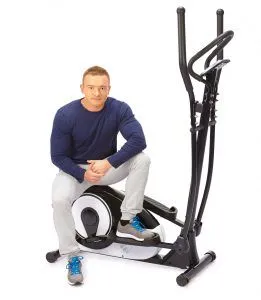
Recommended ellipticals for home
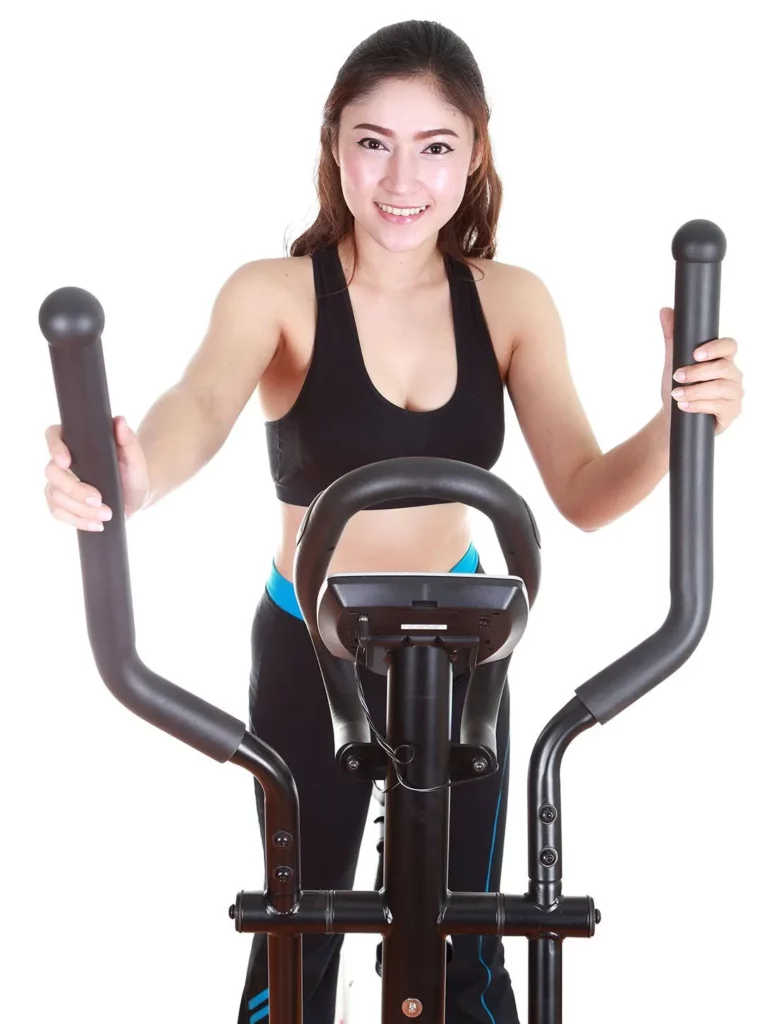
Top budget ellipticals (under $200)
RECUMBENT EXERCISE BIKE VS. TREADMILL

Although this comparison may seem similar to the above section on elliptical trainers, there are some key differences.
Like an elliptical cross trainer, a treadmill is a weight-bearing machine. It targets mostly lower body muscles but also hits a few core muscles that the recumbent bike misses.
A treadmill is a higher-impact machine than the elliptical. If you have issues with lower back or joint pain, you may want to consider a recumbent bike. Though you could use a treadmill at a walking pace, a recumbent bike is a lower impact cardio machine.
BONE DENSITY – For Stronger Bones
Recumbent Exercise Bike vs. Treadmill
One key advantage that the treadmill has over the recumbent bike is its contribution to bone density. Like running in real life, running on a treadmill can wear down the joints, but at the same time it can build up the bones.
The high impact running motion of the treadmill rattles your bones with every step. As jarring as that may sound, giving the bones an occasional high impact workout may strengthen them.
When you put your bones into stressful situations where they have to resist the pull of gravity, it actually increases their density, which is especially important for the elderly.
NATURAL MOVEMENT – Walking Is Natural
Recumbent Exercise Bike vs. Treadmill
Running or walking on a treadmill is a natural movement that you already know how to perform. After all, you started walking when you were a baby.
The treadmill’s simplicity is one of its key strengths. It won’t give you any aches or pains in weird places. It strengthens muscles that you use regularly and keeps you in good shape in a way that is relevant to your everyday life.
SET THE PACE – Consistent Workout
Recumbent Exercise Bike vs. Treadmill
Another advantage the treadmill has over the recumbent bike is its ability to set the pace. All except the cheapest treadmills allow you to program the belt speed. This requires you to keep moving at that speed unless you make a conscious decision to rest.
The recumbent bike, on the other hand, follows your pace. If you get distracted, you may slow down. Your heart rate may drop off without you even noticing. You may burn fewer calories than you think.
There’s something good in the way that you are running or walking on a treadmill with a set pace. When you are pedaling on a bike, it’s easy to start cheating by lowering the speed (sometimes without even noticing) and thus get a lower intensity workout that burns fewer calories.
NOISE – What’s More Quiet?
Recumbent Exercise Bike vs. Treadmill
The treadmill is a noisy beast. Although some motors are louder than others, any model you decide to buy will be louder than a motor-less recumbent bike. Most recumbent bikes are nearly silent even during intense pedaling.
Unless you place the treadmill in your garage or have a room dedicated to a home gym, a treadmill motor may bother other family members. Even the most silent treadmill will produce noise, if not from the motor then from your feet pounding the treadmill belt.
If you have sensitive neighbors or sleeping children, you may need to stick with a recumbent bike.
WEIGHT LOSS – What’s Better For Weight Loss?
Recumbent Exercise Bike vs. Treadmill
Treadmills are very effective for weight loss, and no one can take that away from them. Running on a treadmill simply burns a lot of calories.
Your whole body is involved when you run. That is, as opposed to say, an exercise bike where only you legs move while your butt stays put on the chair.
The moving of your whole body mass increases your heart rate, activates more muscles and thus burns more calories in less time.
The downside of this is the extra stress they put on your joints, and it’s easier to get exhausted rather quickly.
You may not be able to bear running on walking on a treadmill for as long as you can tolerate sitting and pedaling on a recumbent bike. You can sustain doing exercise while seated for more extended periods than you can do so while standing.
SIZE – Which One Is Smaller?
Recumbent Exercise Bike vs. Treadmill
Recumbent bikes are slightly smaller than treadmills. The average treadmill takes up about 65 by 30 inches. Meanwhile, the average recumbent exercise bicycle uses approximately 55 by 20 inches.
PRICE – Which One Is A Better Value For Money?
Recumbent Exercise Bike vs. Treadmill
You can buy a budget recumbent bike for less than a low-end treadmill.
That said, there are some pretty good inexpensive treadmills that may cost only slightly more than entry-level recumbent bikes.
Bang for your buck you will generally get a better recumbent bike for the same price that you would get a treadmill. That’s because the most expensive part of a treadmill is the engine which is not needed in recumbent bikes.
Want to buy a treadmill ?
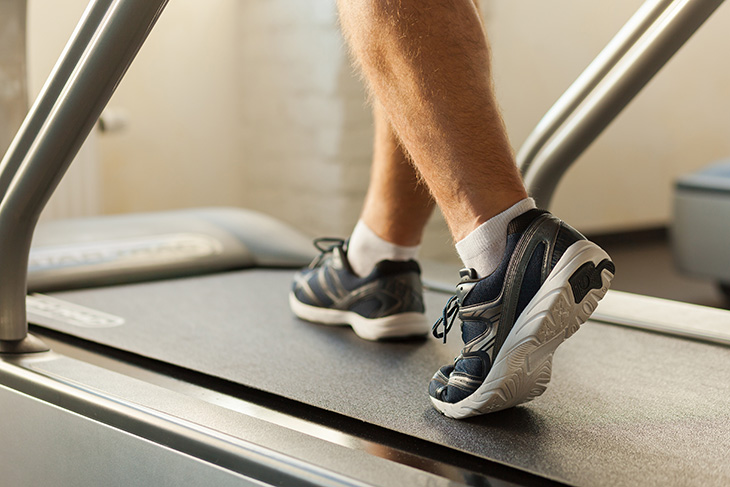
Best treadmills for under $500
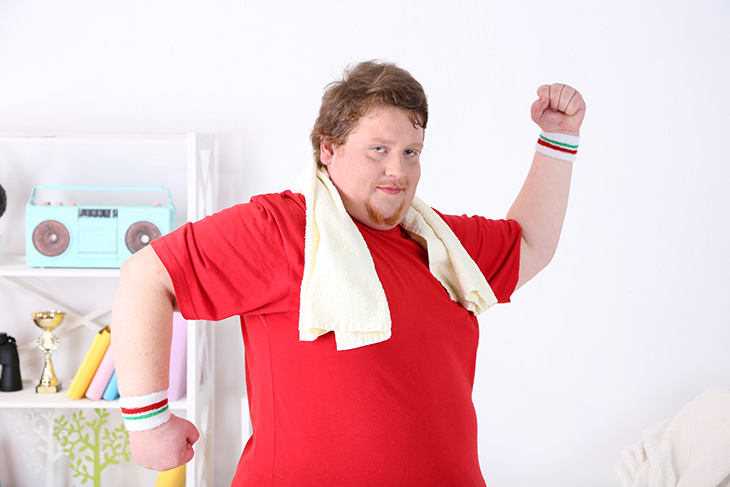
Top high capacity treadmills
RECUMBENT EXERCISE BIKE VS. PEDAL EXERCISER

The pedal exerciser, also called mini exercise bike or just “mini bike” is stripped down exercise bike with only the pedals part remaining. It is just a stand with pedals.
It works out the same muscle groups as basic exercise bike. You can use it like a recumbent bike if you add a low chair or like an upright bike if you add a higher chair. You can even place the pedal stand between a high seat and a desk so you can lean forward onto the desktop and simulate handlebars.
SIZE – Big Vs. Small
Recumbent Exercise Bike vs. Pedal Exerciser
A mini exercise bike is a lightweight machine. It weighs in at around 20 or 30 pounds, which is only about a third of the recumbent bike’s 60 or 70 pounds.
Though pedal exercisers have many benefits, their portability is one of their greatest advantage over all other cardio machines.
This machine is easy to move from one room to another. You can slip it under your desk to exercise while you work. You can drop it beside your kitchen counter to burn some calories while you chop broccoli.
Pedal exercisers generally measure about 25 by 20 inches. The pedals are only about 10 inches from the ground. You don’t even have to carry it down to the garage when you’re not using it. It will usually fit nice and snug in a bedroom closet or under a bed, no dedicated place or a home gym are needed.
Recumbent bikes are much bulkier, you can’t even compare them to the pedal exerciser compact dimensions.
You will want to keep your recumbent bike in one place. Although you can find foldable models or recumbent bikes with wheels, they still tend to take up more space and are clumsier to lug around between rooms.
In summary, the mini exercise bike is the clear winner in size and portability. In fact, it is the smallest and most portable of all the cardio machines.
COMFORT – What’s More Comfortable?
Recumbent Exercise Bike vs. Pedal Exerciser
The pedal exerciser is not an intrinsically comfortable machine. How comfortable your pedal exerciser is, depends on the seat you decide to use with it.
The recumbent bike, on the other hand, is the king of comfort. Its hallmark is its wide seat and plush backrest. This is a professionally-engineered piece of equipment with customized details and precise specifications.
The manufacturers put a lot of thought into its perfect alignment and there right distance and angle of the seat from the pedals. You would be hard-pressed to match its ergonomic design on your own at home by moving a pedal exerciser around the sofa.
In summary, the recumbent bike is the most comfortable of all the cardio equipment on this list. This is especially true for long periods of use. The longer you use any of these machines, the more the recumbent bike’s massive comfort advantage will shine.
SCREENS AND EXTRA FEATURES
Recumbent Exercise Bike vs. Pedal Exerciser
Some mini bikes have a small, bare-bones display panel that provides limited data and is difficult to read. You won’t find heart rate monitoring equipment, internet connectivity or other fancy bells and whistles.
Even basic recumbent models have some kind of display to track how many calories you burn. Most recumbent bikes include HRM (Heart Rate Monitor) so you can check your pulse. The high-end models come with big LED screens that can connect to the internet and Bluetooth.
Some models, like the Expresso and the CyberCycle, have beautiful 3D racing tracks. They can simulate biking through lush forests or beachfront trails at sunset. Some models including the very popular Schwinn 270 recumbent bike, have luxurious extras like built-in sound systems and cooling fans for your face and body.
In summary, recumbent bikes come with endless extra features, depending on how much you want to spend of course.
PRICE – Expensive Vs. Cheap
Recumbent Exercise Bike vs. Pedal Exerciser
Recumbent bikes have more parts, including the back support, the large frame, and the display panel. These extras tend to hike up its price quite a bit.
The mini exercise bike, being two pedals in a mechanical housing, is about as cheap a cardio machine as you can find.
For the best pedal exercisers click here
RECUMBENT EXERCISE BIKE VS. SEMI-RECUMBENT EXERCISE BIKE
The semi-recumbent bike is a cross between a recumbent and an upright.
The standard recumbent bike is almost horizontal, while the upright bike’s position is vertical.
The semi-recumbent exercise bike is somewhere in the middle between horizontal and vertical, it places your legs at about a 45 to 60-degree angle.
Semi-recumbent models cause a little bit more joint stress than upright models, but a little bit less than fully recumbent models.
The major advantage of semi recumbent bikes over fully recumbent models is that you can fold them when not being used. Folded, they hardly take any space.
These bikes work out pretty much the same basic leg muscles as the other two models. They hit the glutes less than recumbent bikes and more than upright bikes. They involve the core muscles less than the upright and more than the recumbent.
The seat on the semi-recumbent bike is higher than a recumbent bike seat, so it is less comfortable and slightly more difficult to mount. If you have balance or mobility issues, you may need to use a step to get up on it.
Semi-recumbent bikes involve a more active posture than recumbent bikes. This means a less back support. It also means that you can burn a few more calories per hour on this machine.
SIZE & PORTABILITY – Which Is More Portable?
Recumbent Exercise Bike vs. Semi Recumbent Exercise Bike
This is where the semi-recumbent shines over the recumbent bike. Most recumbent bike models advertised as foldable are actually semi-recumbent bikes and not regular “fully” recumbent bikes.
Folding semi-recumbent models tend to use the same X-frame design as upright bikes do. The legs are kept on the floor at a 45-degree angle, so by design, the semi-recumbent bike takes less floor space.
The other advantage of the semi-recumbent design is that you can easily fold them when not in use so they will consume very little space.
Recumbent bikes take up more floor space. Their horizontal leg positioning makes for a longer machine. They are much longer and a bit wider than semi-recumbent models, due to their broader padded seat and side-mounted handlebars.
In summary, if you have limited space available, you may consider a semi-recumbent model. They are narrower, shorter, and lighter than recumbent models. They are easy to fold up and store at your convenience.
STABILITY – What’s More Stable?
Recumbent Exercise Bike vs. Semi Recumbent Exercise Bike
The portability of the semi-recumbent bike may come at the cost of stability. Recumbent bikes sit low to the ground on a solid base that is almost impossible to tip over. They have a more massive frame capable of bearing heavier loads.
The X-shaped frame of most semi-recumbent models is tenuous compared with fully recumbent models. They aren’t that easy to displace, but the frame is lighter and can support less weight. If you have doubts about your own stability, the extra safety provided by a recumbent bike will be worth it to you.
PRICE – Cost Of Each
Recumbent Exercise Bike vs. Semi Recumbent Exercise Bike
The semi-recumbent exercise bike is a more basic piece of equipment than the recumbent bike. Semi-recumbent bikes are cheaper and considered less professional. They usually don’t come with many extras. Most do not have speakers or a fan or fancy large display consoles.
Higher-end models may come with a small display and minimal monitoring equipment. The cheaper semi-recumbent models may only feature some generic handlebars or a tray where you can place your laptop.
Budget recumbent bikes and semi-recumbent bikes cost roughly the same. When you go for higher-end models, recumbent bikes tend to cost slightly more, and there are almost no high-end semi-recumbent bikes.

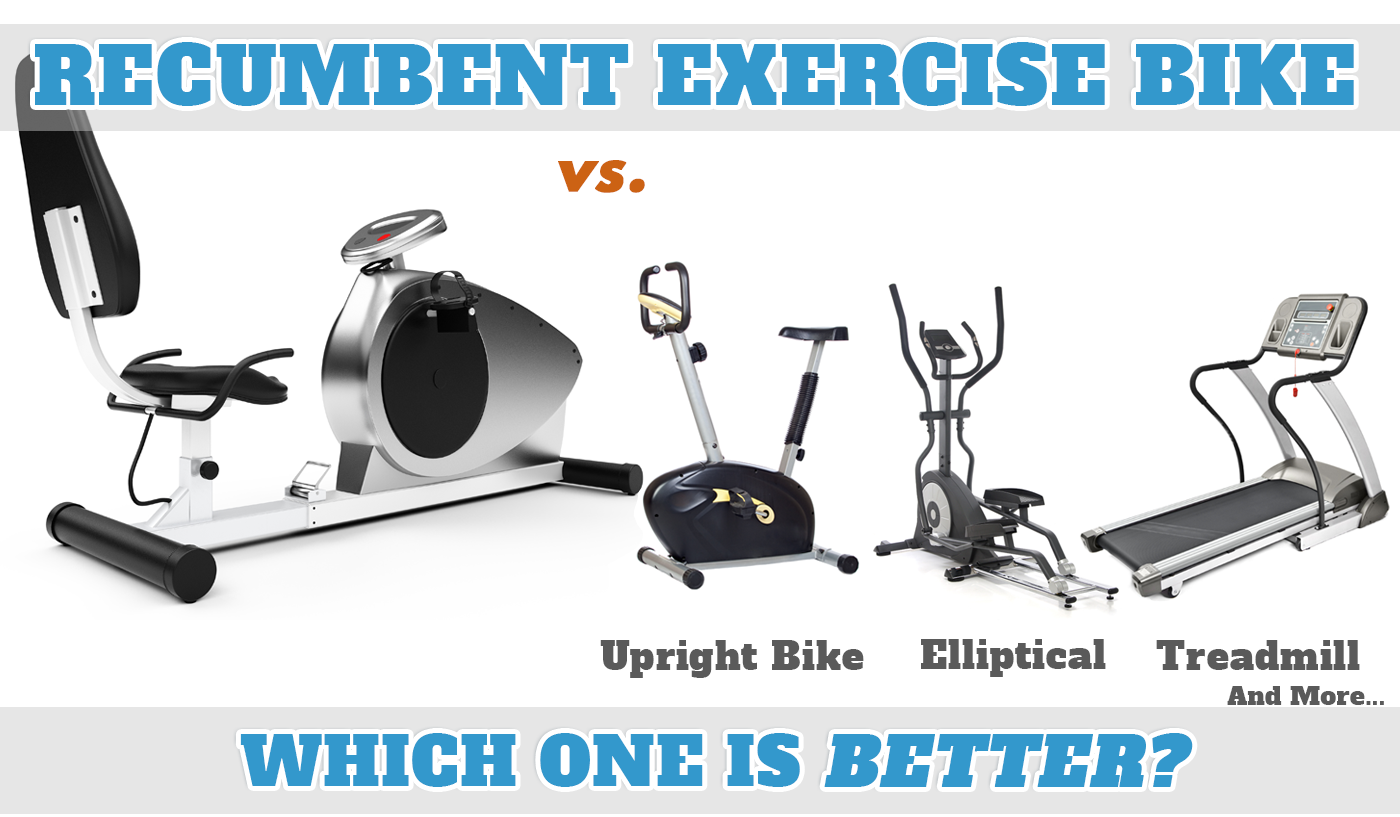



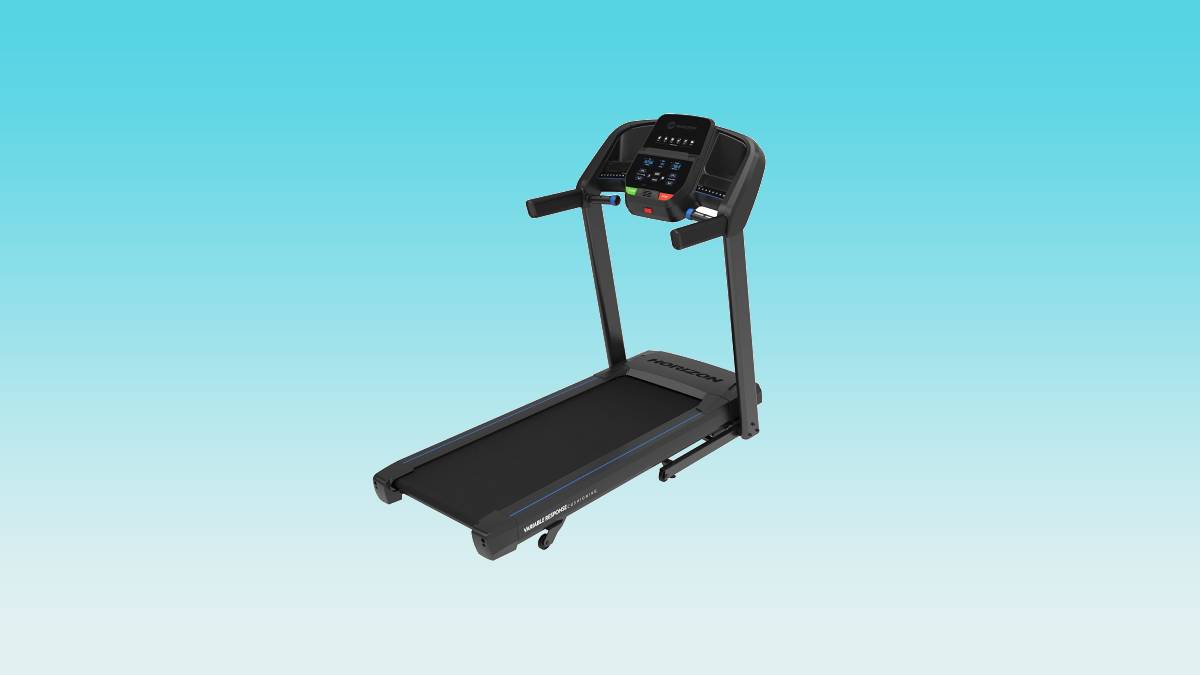
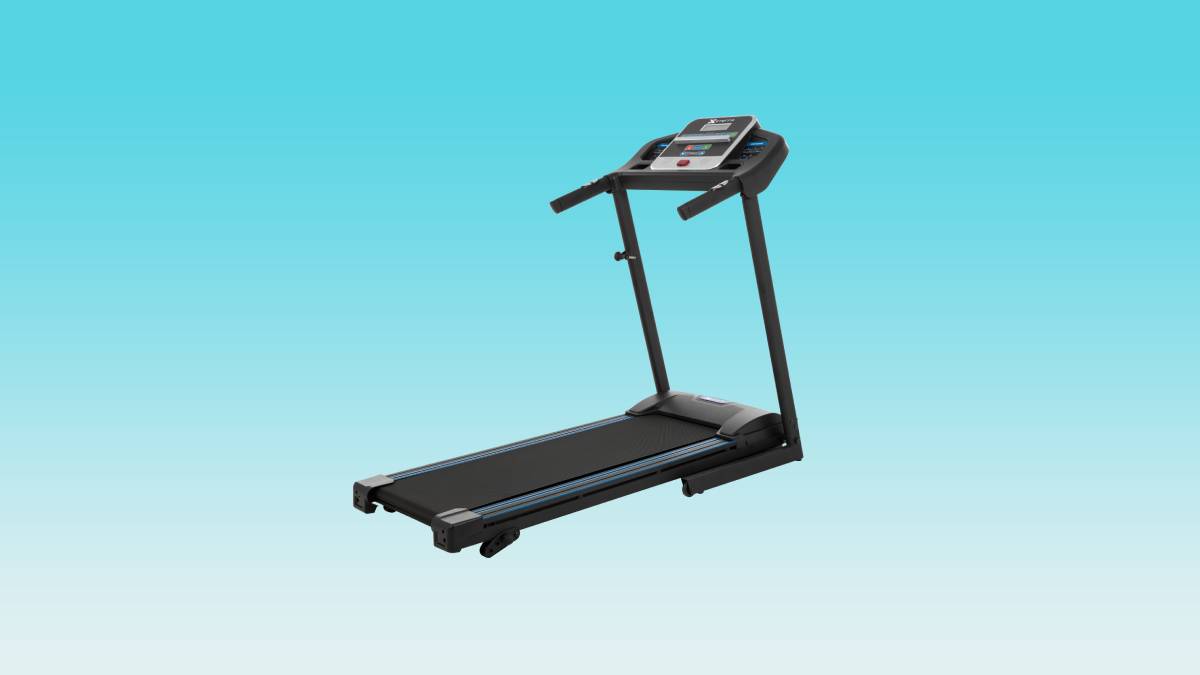
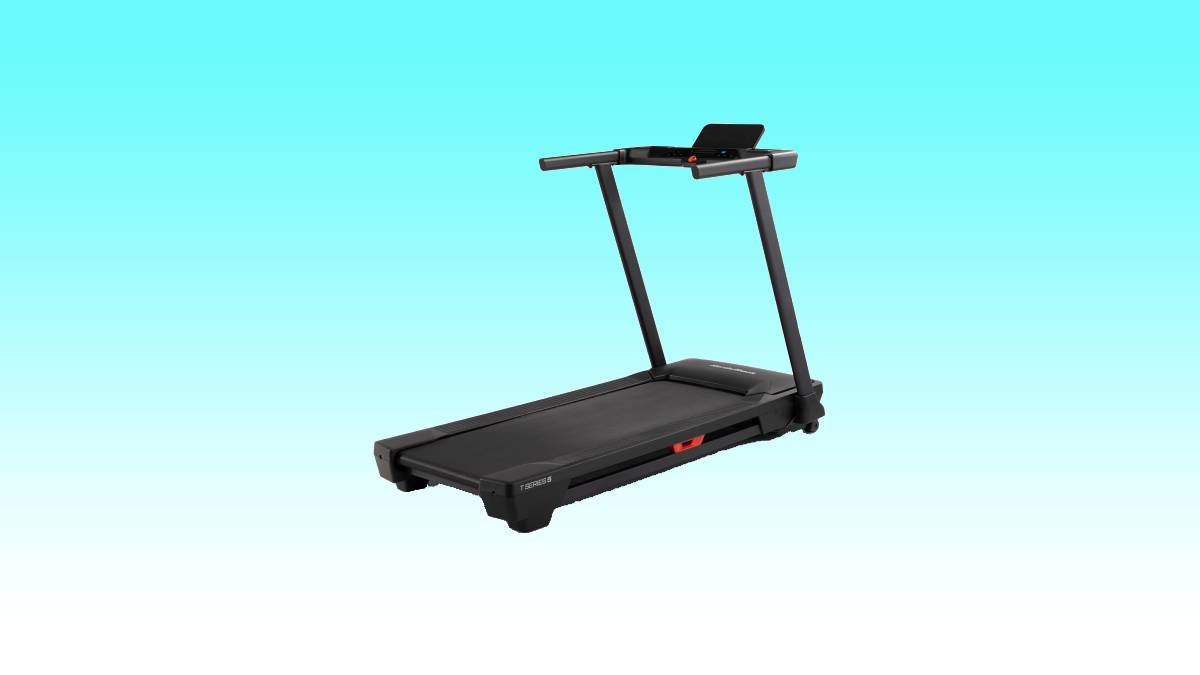
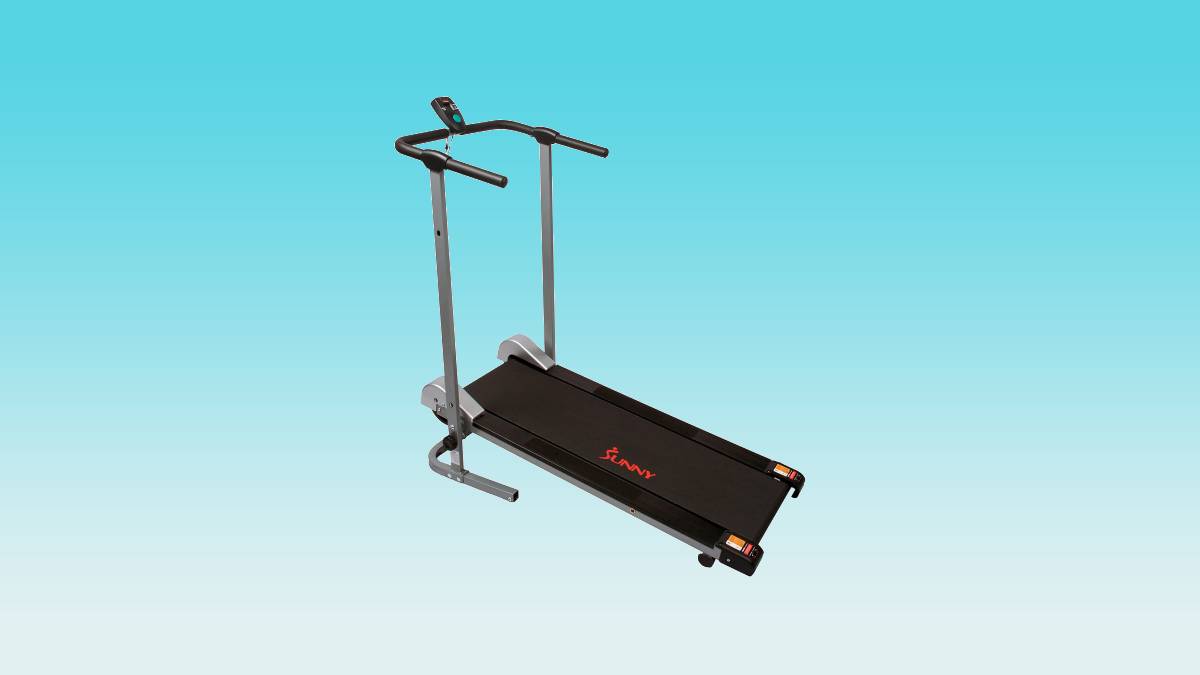
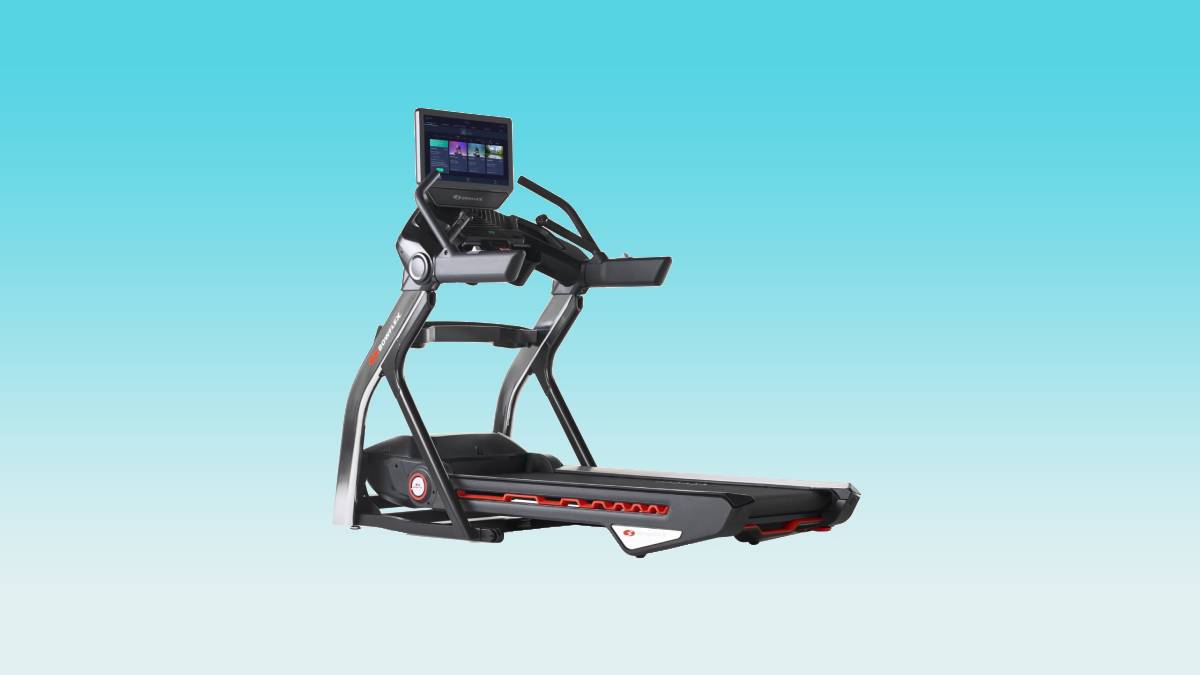
Leave a Reply